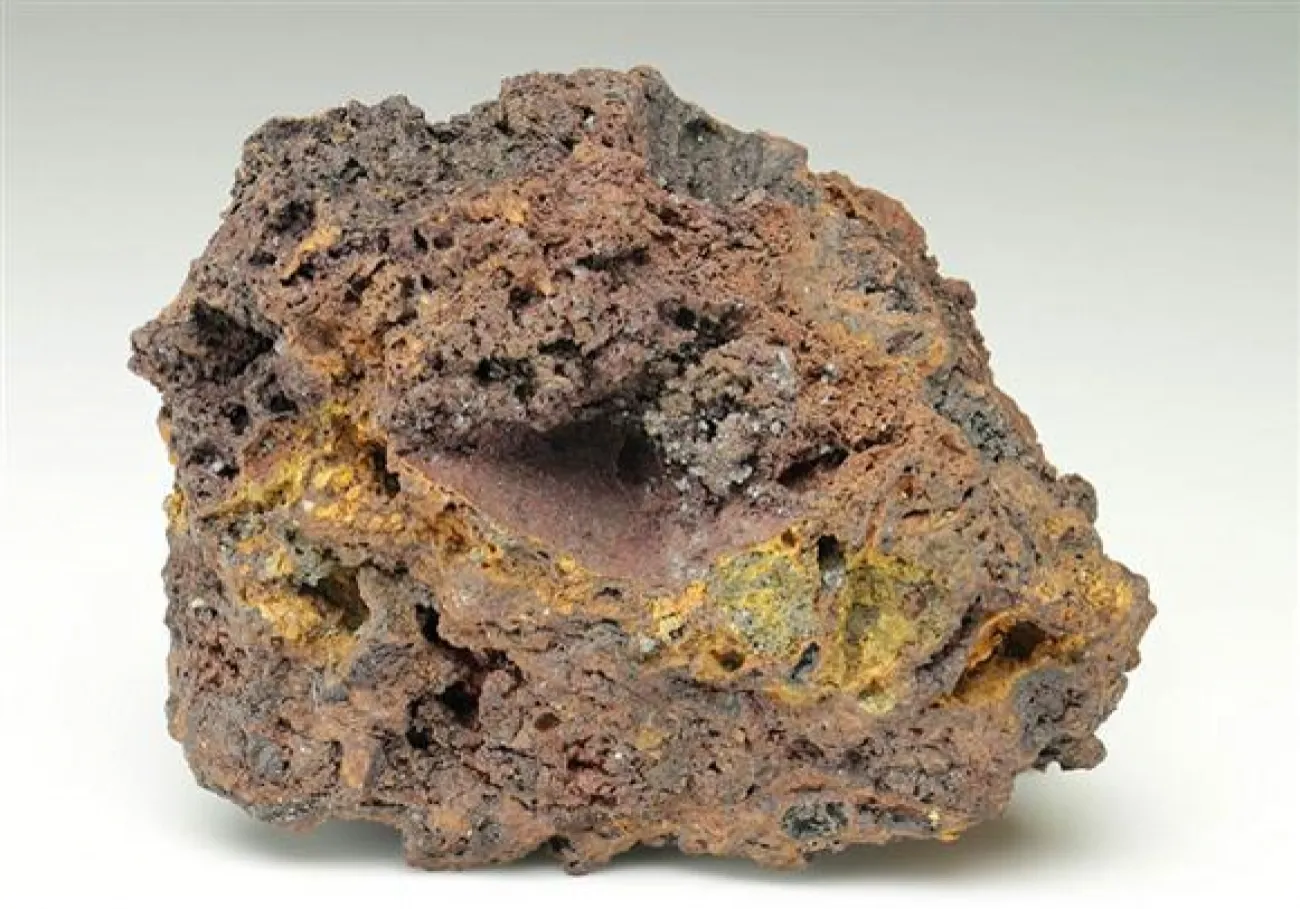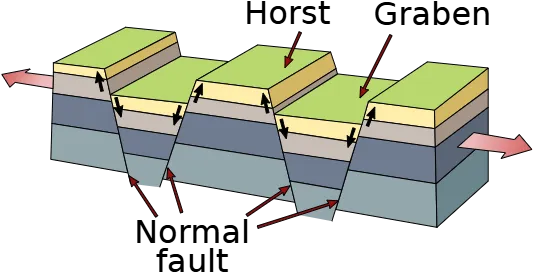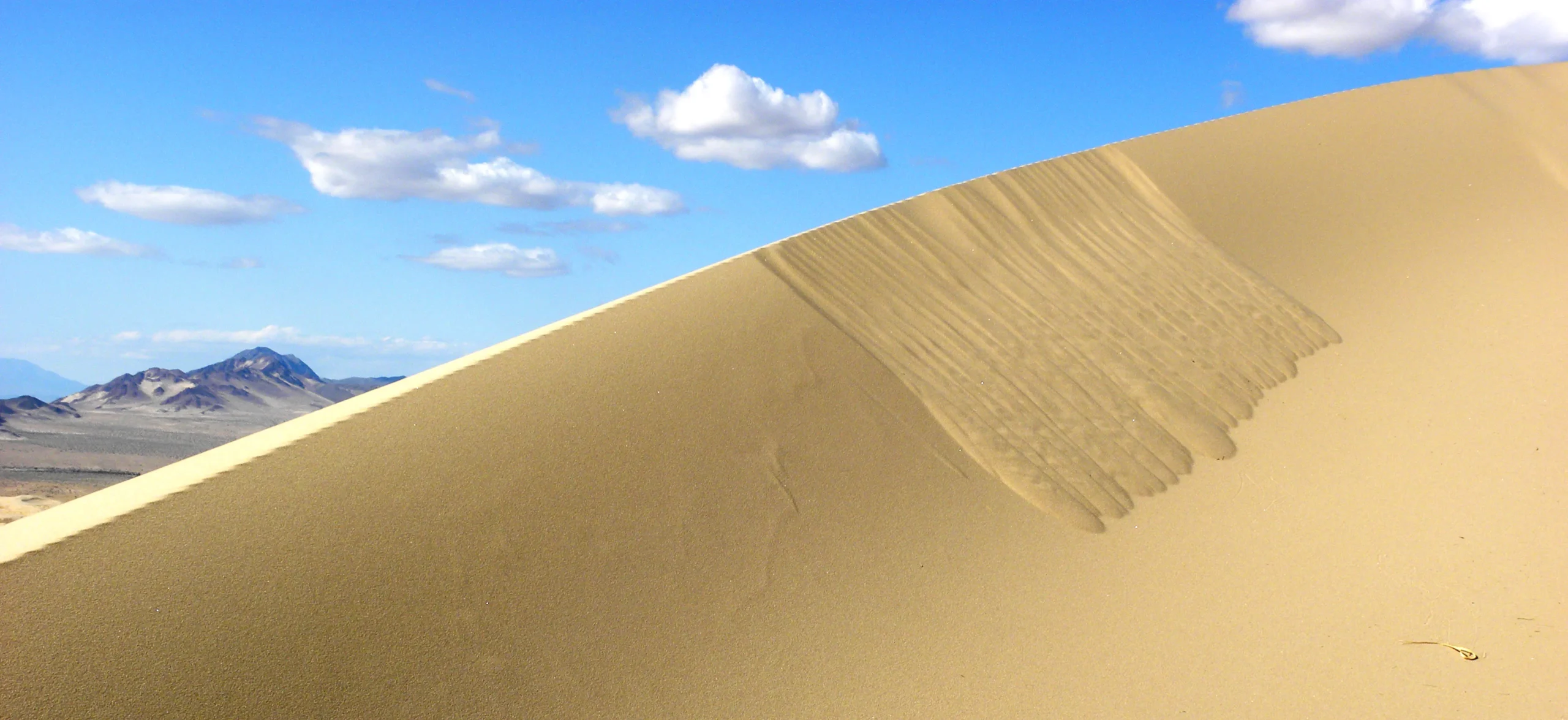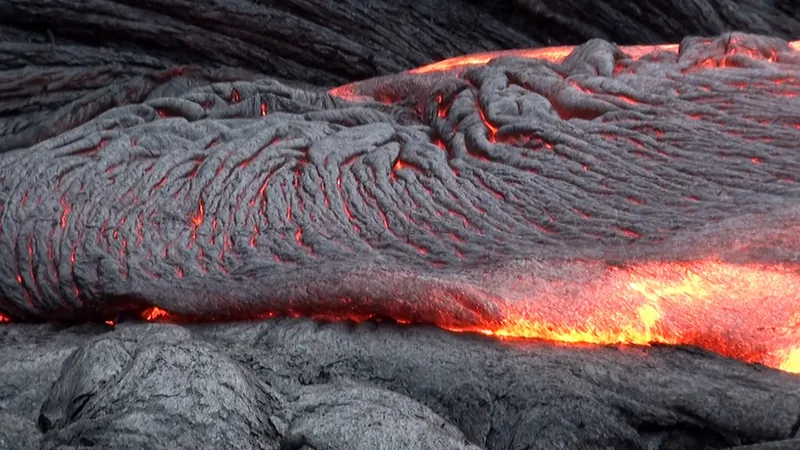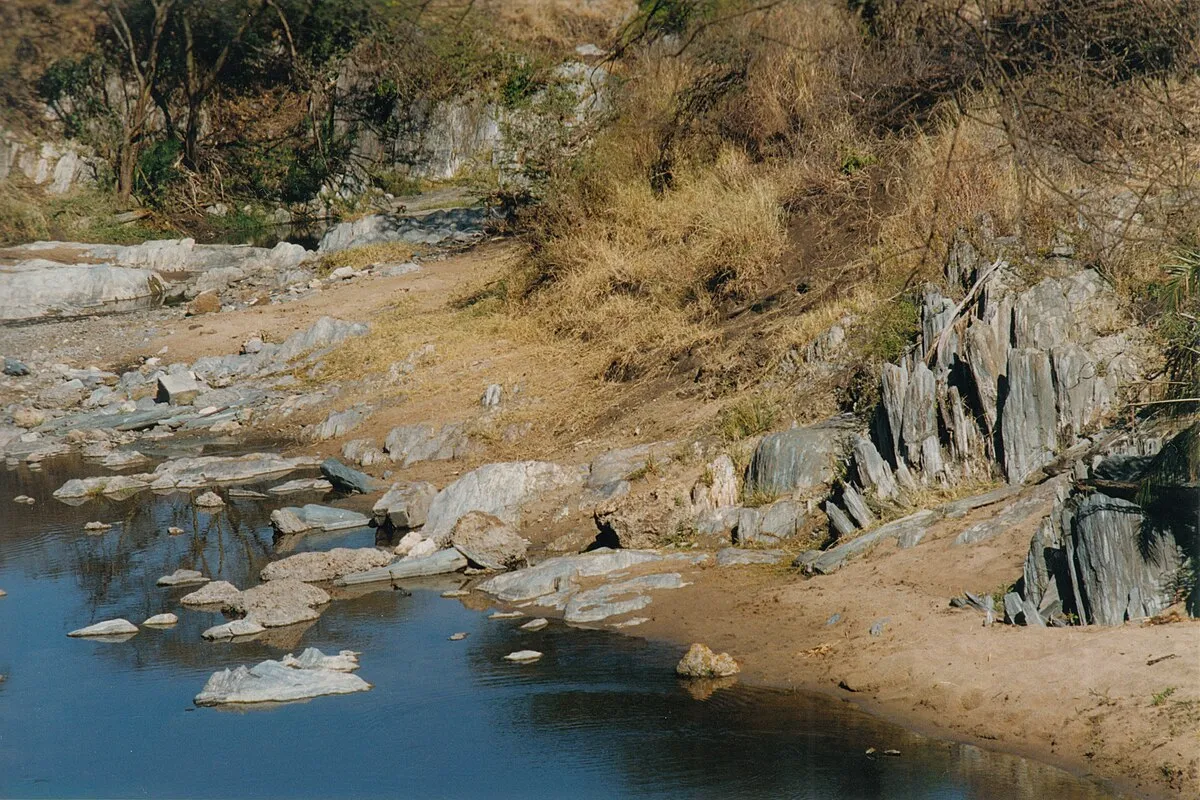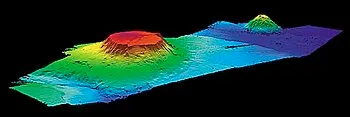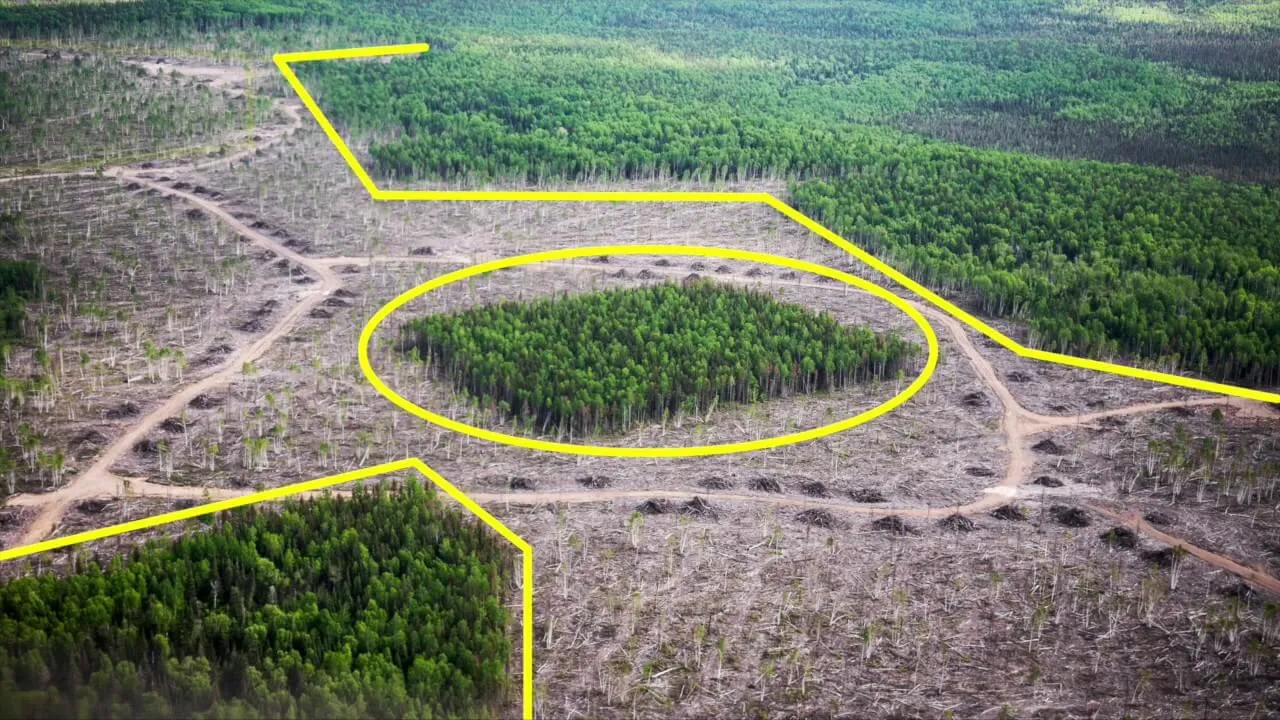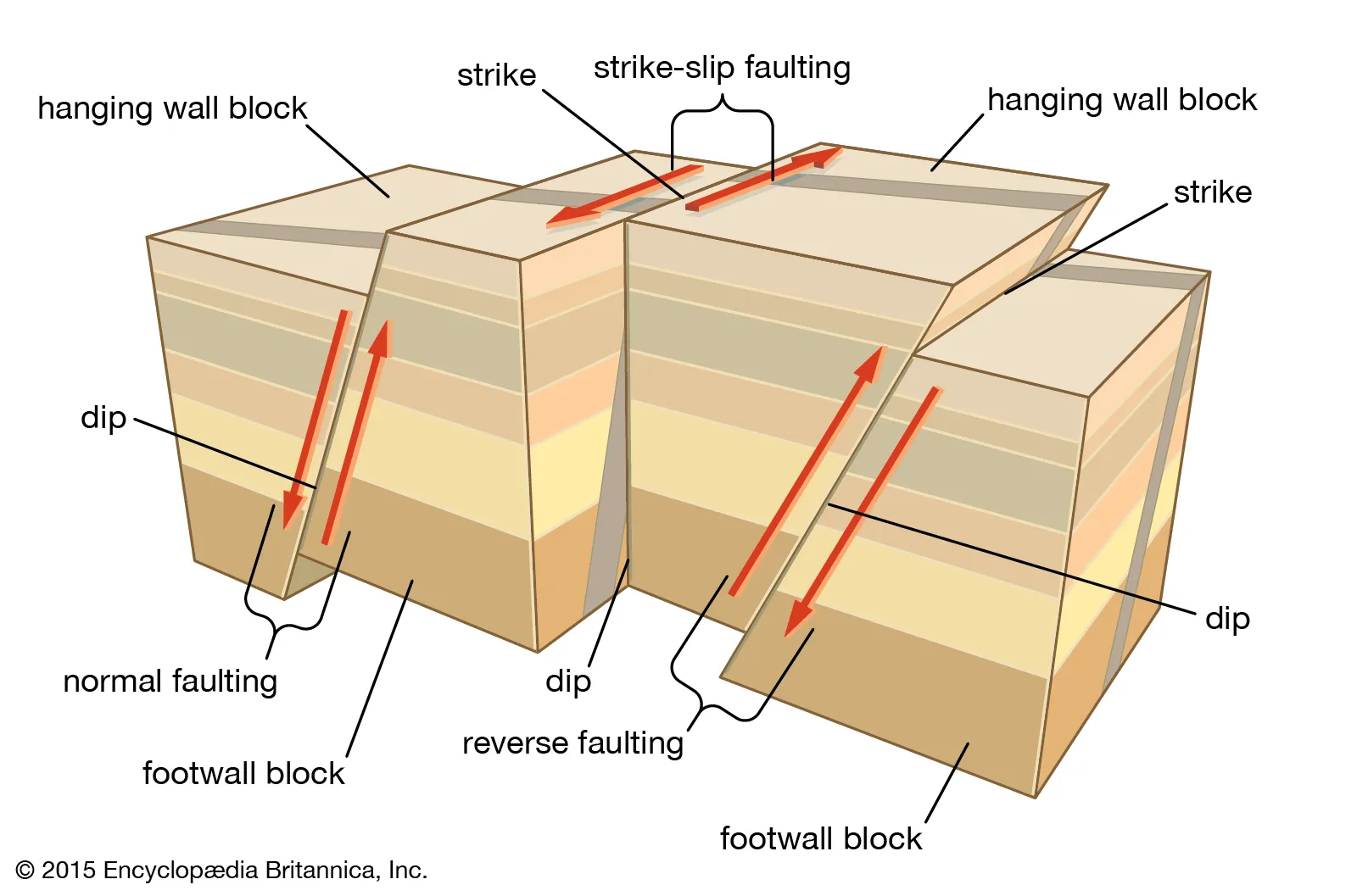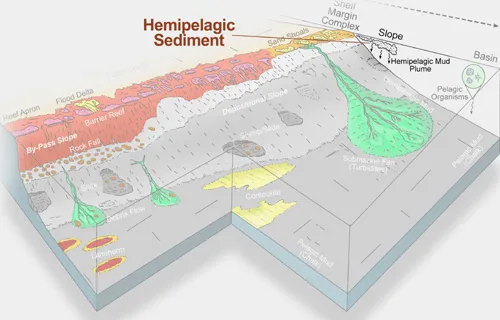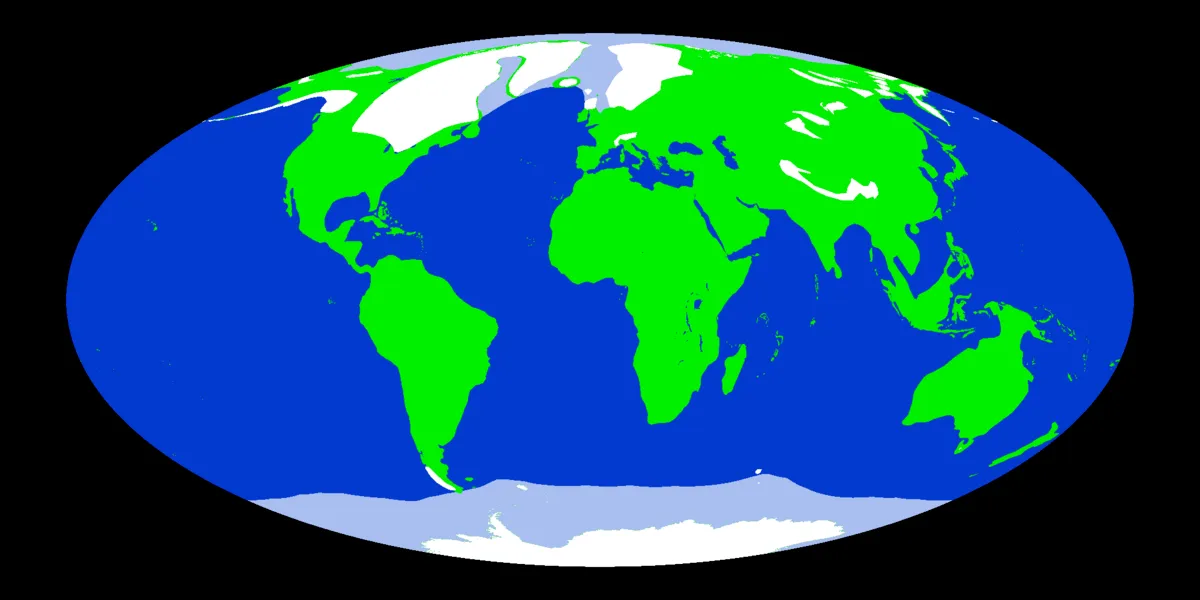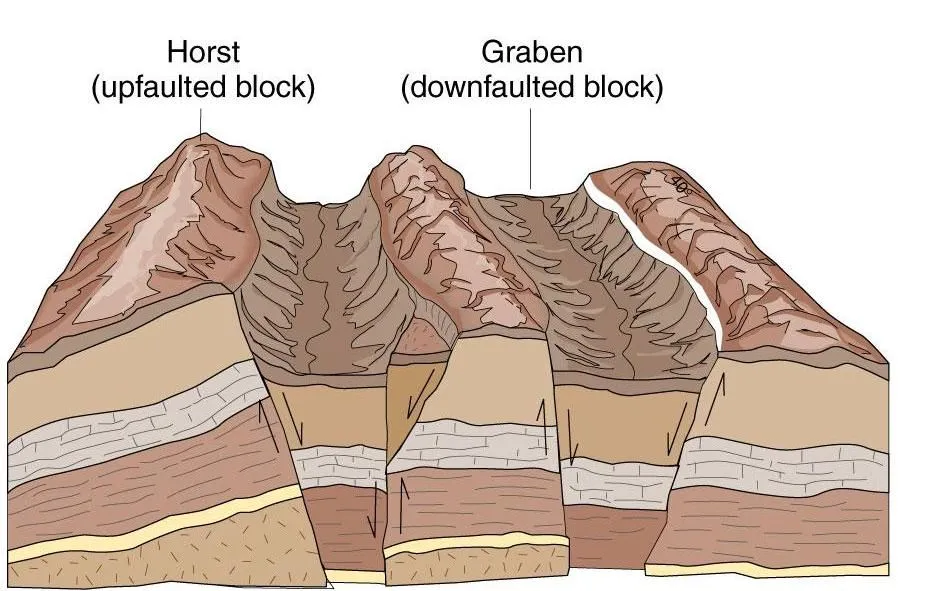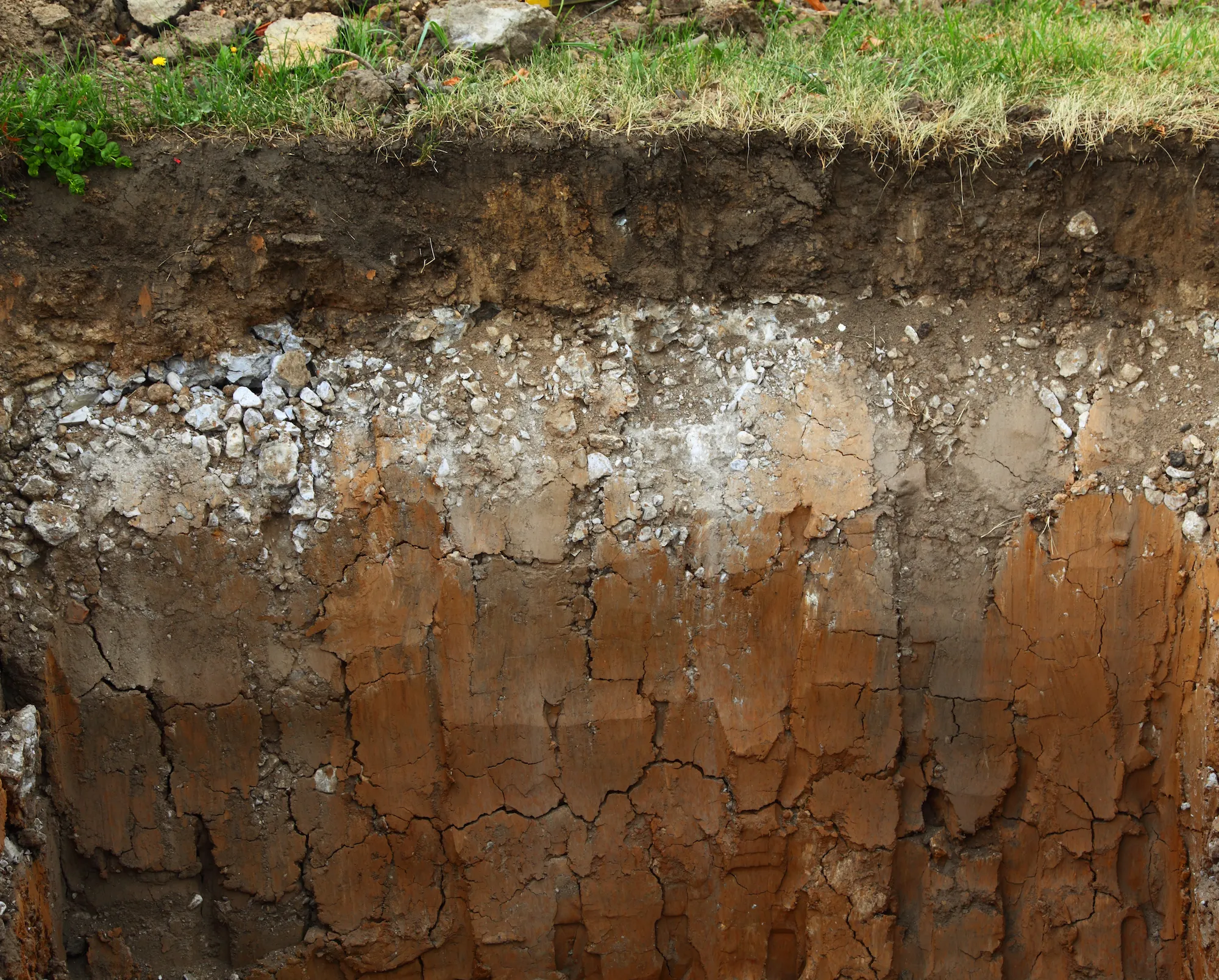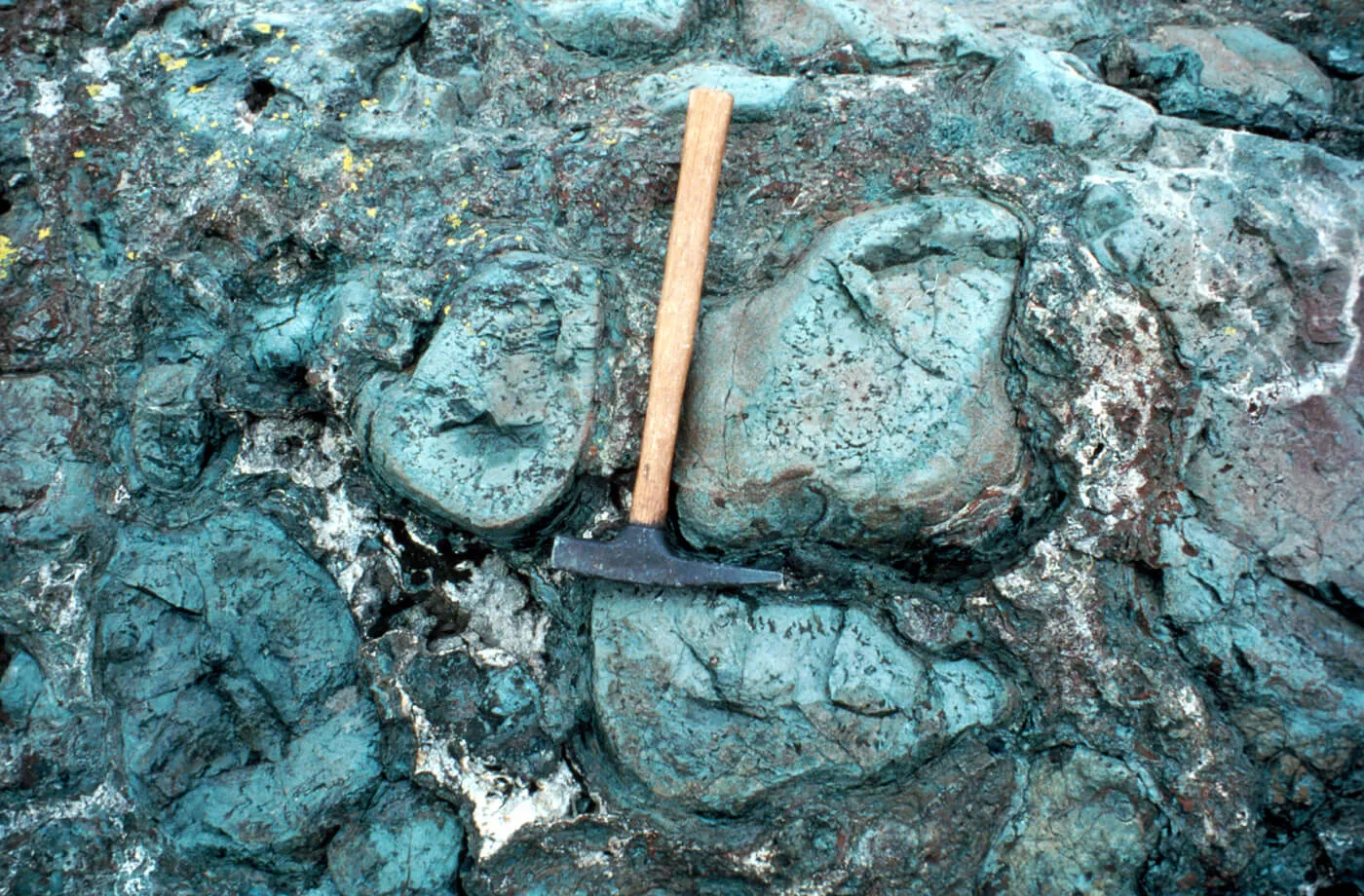A gossan is an iron-rich, weathered, oxidized zone found at the surface above a sulfide mineral deposit. Gossans are significant in mineral exploration as indicators of underlying ore deposits, particularly in the search for copper, gold, and other valuable metals. They form through the oxidation of sulfide minerals and the leaching of soluble components.
Reference: Guilbert, J. M., & Park, C. F. (1986). The Geology of Ore Deposits. Waveland Press.

